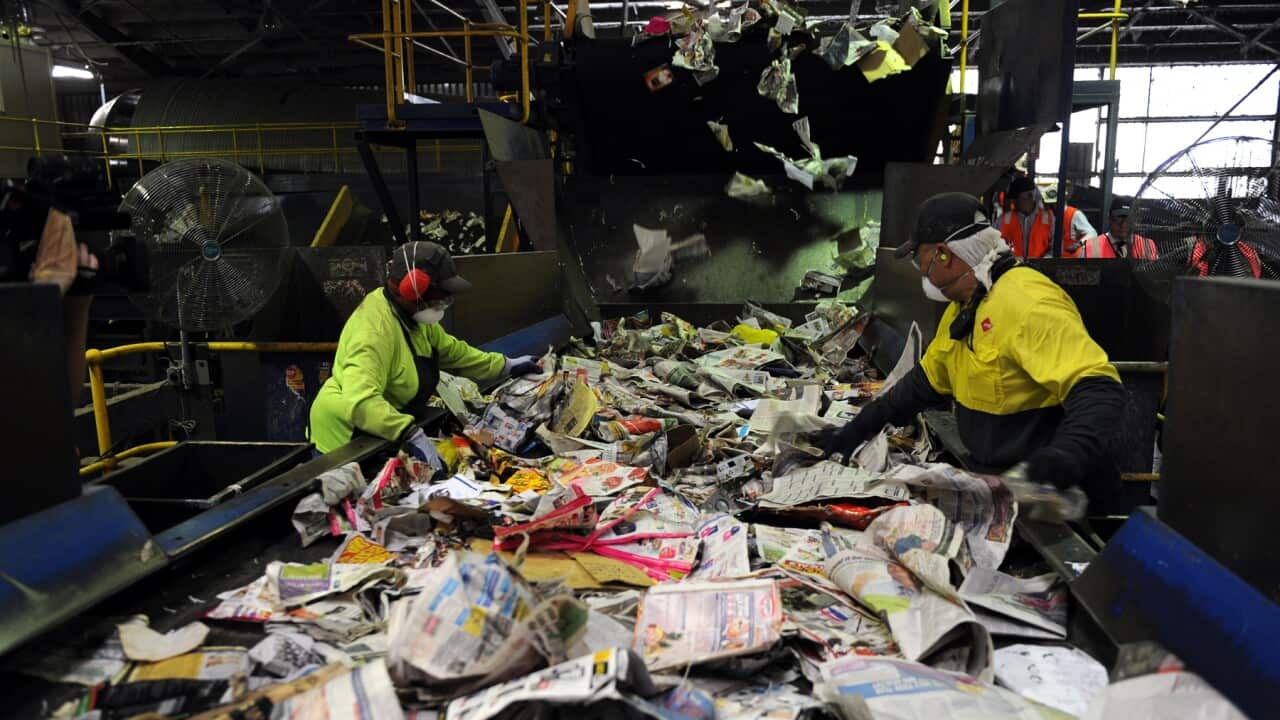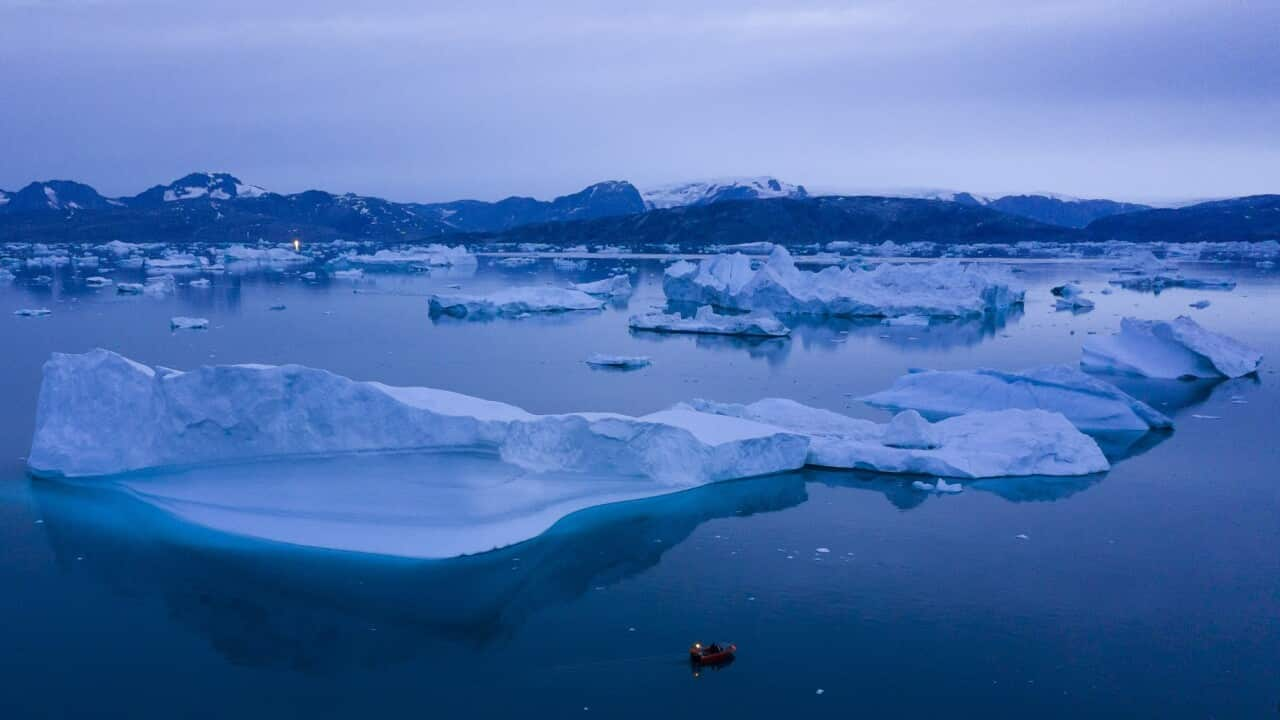TRANSCRIPT
In 2022, Dubbo-based company, Little Big Dairy made the decision to switch the bottle caps on its milk cartons from blue to clear.
And while it may sound like a minor change, it's one aimed at tackling a major issue: plastic pollution.
Campbell Chesworth, who oversees operations at Little Big Dairy explains that coloured bottle caps contaminate.
"Having the clear lid removes the pigment that often a dark blue bottle cap on a milk bottle will have. That means the whole bottle can be turned back into clear plastic."
The company also offers so-called 'bladder bags' for cafe clients as a way to reduce packaging.
It's among a series of steps the business is taking towards sustainable packaging.
"So the bladder is ten litres so it does away with five plastic bottles, lids and labels. The name Little Big Dairy comes from a saying from my grandfather that if you take care of the little things the big things will take care of themselves. And that's something that sustainability and that ethos just really go hand-in-hand."
The moves are in line with national targets set in 2018, following industry and government consultation - part of a sweeping plan aimed at reducing the amount of waste ending up in landfill.
But almost eight years on and with the deadline looming it's become clear the goals are out of reach.
Chris Foley is the CEO of Australian Packaging Covenant Organisation, or APCO, the not-for-profit group tasked with coordinating the 2025 national targets.
He says there are a few factors at play - one of them being an economic gap.
"So admittedly, there are a number of our members who need to do more with their packaging. It needs to be more recyclable and reusable. But equally, the materials that they're putting into the market, the packaging they put on market needs to be collected. And at the moment, some of that packaging isn't worth collecting. There's an economic gap. That's one of the big challenges is the system's not working as it should to be able to collect and recycle and move it back into a circular economy."
The four key targets for 2025 were to have 100 percent reusable, recyclable or compostable packaging;
- For 70 per cent of plastic packaging being recycled or composted.
- To include an average of 50% recycled content across all Australian packaging
- And the phase-out of problematic and unnecessary single-use plastics packaging.
Jennifer Macklin from Monash University's Sustainable Development Institute says the goals were always "ambitious."
"If you think about taking the multitudes of different types of packaging, packaging on your household, food and groceries from a supermarket, but also packaging on what businesses receive or even packages in the health and medical sectors - packaging is used across our entire economy. That's a huge shift to make in seven years to change how that packaging is designed, what it's made from in order to be a hundred per cent recyclable."
Currently, 86 per cent of packaging in Australia is able to be recycled - not too far off the goal of 100 per cent.
But Ms Macklin says just because a product can be recycled - there is no guarantee it will be:
"We're seeing gaps in both the percent of packaging that is actually recyclable and the amount of recycled content that's going into packaging in certain sectors, in certain material types."
She says plastic is the problem child.
Just 19 per cent of plastic packaging is being recovered, despite the goal of 70 per cent.
So why the lag?
"Plastic is unique in having a collection of different types of plastic, so different types of polymers and those different types of polymers provide different packaging functionality initially. And so that's why often different types of plastic are selected initially or sometimes multiple types of plastic are put into the same piece of packaging. They provide different functions. When we want to recycle it, it works best if we can separate them back out into those different types of polymers. And that can be really difficult to tell is this shampoo bottle, this type of plastic or that type of plastic. And different manufacturers might choose to make shampoo bottles out of different types of plastic. So you can't even just say, well, all shampoo bottles belong in this category of plastic and all plastic milk bottles belong in this category of plastic. So it's got that real difficulty just at almost the chemistry level in terms of what packaging is made up from."
Soft plastics are particularly difficult.
And Chris Foley says Australia is lacking the infrastructure.
"There are technical challenges to recycling it. And in an Australian context, the manufacturing capabilities of the country aren't there to reprocess domestically in a chemical context where you'd be bringing it back in as a recycled plastic film."
And he says rigid plastics - while easier - are not being sorted properly by households.
"We know that circa 70% of rigid plastic packaging that leaves the household is actually designed to be recycled, but it's not. So 70% of rigid plastics that leave your home is actually, unfortunately households aren't putting it in the right bin."
Though the 2025 goals are out of reach, APCO says progress has been made and we need to build on that momentum.
It's developed a new strategy for 2030, which include filling the economic gaps, as well as investment in additional infrastructure to better process waste.
The plan also includes financial incentives for companies who incorporate sustainability into their packaging designs.
"That essentially means that if you choose the right materials and you choose recycled content... that will mean that you actually as a brand owner will pay a reduced fee through what we call eco modulation. Those fees collected from Australian businesses will then be reinvested back into the Australian packaging system. So it is a case of those fees go straight back in to closing gaps from the collection, the sorting and the recycling."
Mr Foley adds that consumers also have a role to play.
"I think probably a really key call out is look for the Australasian recycling label. Follow those directions and you can then do your bit, but then make sure at the other end when you're back in the supermarket, or if you are at a Bunnings or an office works or a Kmart, make sure that you look for products on shelf that are made with recycled content and or look for packaging that features recycled content. Consumers can do their bit."













